In the past
Yesterday’s drawings for today?
Over the last 200 years, the scene of a juridical hearing has not changed a great deal.
The furniture of many courtrooms and the clothing of both litigants and the public have changed of course, but the robes of defence lawyers, prosecutors and judges seem to be timeless and the position of the different actors in the courtroom has hardly changed at all.
Since the law of December 6, 1954 law of December 6, 1954, it has been forbidden to take photos in the courtroom, which makes the presence of artists more necessary than ever.
This relative continuity means that common themes can be identified in the work of today’s artists and yesterday’s, which obviously encourages us to make associations and comparisons.
Image n°1 : The Revision of the Dreyfus trial.
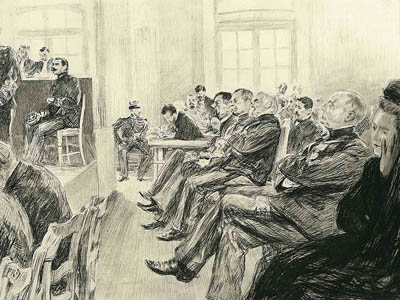
Ordre des avocats de Paris . Collection of Engravings : The Dreyfus Affair. 1899. Etching, 27,5x41,4cm.
The artist, who wanted to give a global view of the trial, made some choices.In this sketch, Renouard has focused on the journalists or court reporters who are seen from behind on the left, with the standing figure of Dreyfus in the mid-ground. On the right, the public: the woman in the foreground is probably the widow of Colonel Henry, who died after confessing that he was responsible for producing a fake document against Dreyfus.A drawing, even factual, in never entirely neutral….
© Ordre des avocats de Paris
Image n°2 : The Court hears the Prosecutor's Speech at Thèrèse Humbert's Trial.
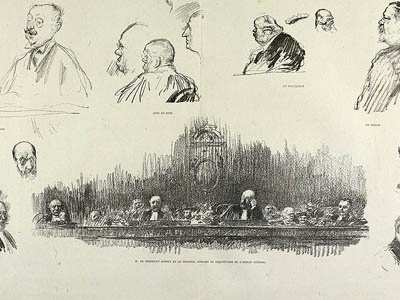
Ordre des avocats de Paris . 1903. Lithography, 37x52cm.
To convey the complexity and the wealth of the scene offered by a hearing, the artist can juxtapose a main frame and lots of little sketches. Here, Léandre shows the judges in the Assize court surrounded by a gallery of portraits of judges, witnesses and mere spectators..
© Ordre des avocats de Paris
Image n°3 : A Witness in the Box at Thèrèse Humbert's Trial.
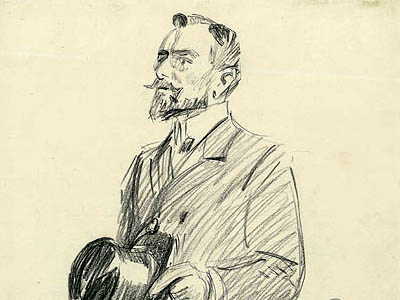
Ordre des avocats de Paris . 1903. Pencil drawing, 35,5x27cm.
From one courtroom to another, the witness box can change in appearance and each witness who testifies is a new subject for the artist. This was drawn over a century ago, but the expression of this ephemeral player in the judicial theatre is still typical of our times: in front of judge and jury, one must tell the truth, the whole truth, and nothing but the truth!.
© Ordre des avocats de Paris
Image n°4 : Prosecuting Counsel's Speech at the Zola Trial.
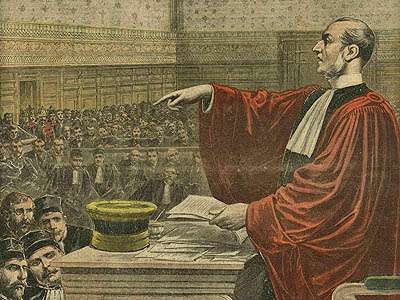
Ordre des avocats de Paris . Le Petit Journal. 6 mars 1898. 45x31cm.
The moment in a trial when the prosecuting counsel rises to make their speech is always a dramatic one. All eyes are on the orator. The artist is no different, and from trial to trial, he brings us a gallery of portraits of prosecuting counsel who may be quite different in appearance, yet they all have something in common..
© Ordre des avocats de Paris
Image n°5 : Renouard and Léandre.
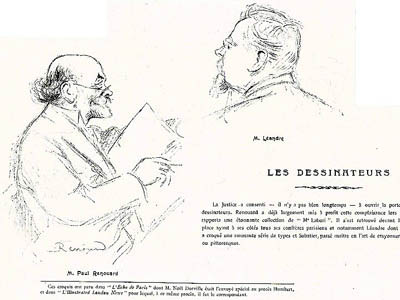
Ordre des avocats de Paris . The Humbert Trial. 1903. 15x21cm.
The artists who frequent courtrooms form a little fraternity. How can they resist the temptation to sketch their counterparts? During Thérèse Humbert’s trial, Renouard was sketched by Léandre and by Dorville, who also gave us Léandre’s expression: three indissociable names in the history of courtroom sketches whose works feature in this exposition..
© Ordre des avocats de Paris
Image n°6 : Renouard.
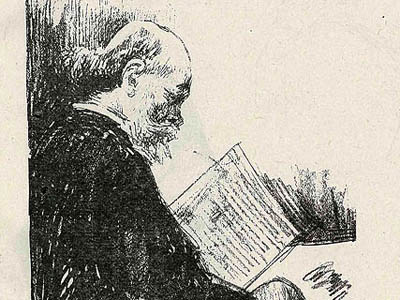
Ordre des avocats de Paris . The Humbert Trial. 1903. 19x13cm.
The artists who frequent courtrooms form a little fraternity. How can they resist the temptation to sketch their counterparts? During Thérèse Humbert’s trial, Renouard was sketched by Léandre and by Dorville, who also gave us Léandre’s expression: three indissociable names in the history of courtroom sketches whose works feature in this exposition..
© Ordre des avocats de Paris


